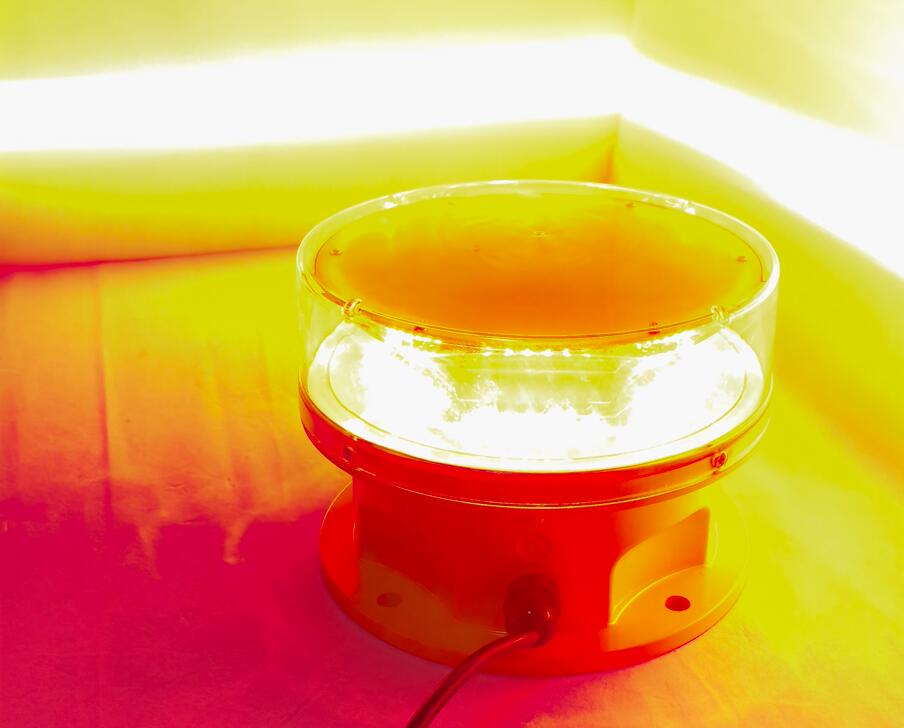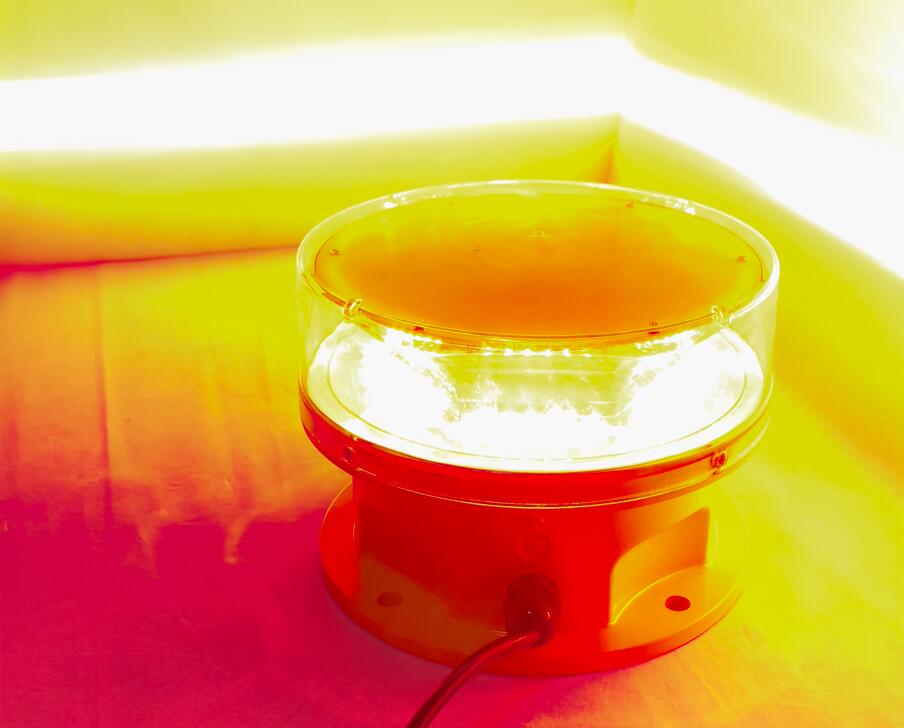In the complex world of aviation and industrial safety, few visual signals are as universally recognized as the red beacon light. These critical warning devices serve as silent sentinels, marking potential hazards and guiding aircraft safely through both day and night operations. This article examines the vital role of red beacon lights across various applications, their technological evolution, and the stringent standards governing their use in modern safety systems.
The Fundamental Role of Red Beacon Lights
Red beacon lights perform several crucial safety functions:
Obstruction Warning: Marking tall structures like towers, cranes, and wind turbines
Aviation Safety: Guiding aircraft during low-visibility conditions
Industrial Signaling: Alerting workers to hazardous areas or operational equipment
Emergency Identification: Marking critical infrastructure during power outages

The distinctive red glow has become an internationally recognized symbol of caution, instantly conveying danger to observers in any environment.
Technical Specifications and Design Features
Modern red beacon lights incorporate advanced engineering to meet demanding operational requirements:
Optical Performance
Luminous Intensity: Ranging from 10 to 2,000 candela depending on application

Beam Distribution: 360-degree visibility with specific vertical coverage angles
Flash Characteristics: Typically 20-60 flashes per minute for maximum conspicuity
Durability Components
Housing Materials: Aircraft-grade aluminum or polycarbonate composites
Environmental Sealing: IP66 or higher ratings for weather resistance
| red beacon light |
Temperature Tolerance: Operational from -40°C to +70°C
Power Systems
Voltage Options: 12VDC to 240VAC configurations
Energy Efficiency: LED models consuming <10W with equivalent output to 100W incandescent
Backup Power: Battery or capacitor-based emergency operation
Regulatory Framework and Compliance Standards
Various international bodies govern red beacon light applications:
Aviation Requirements
ICAO Annex 14: Specifies light intensity and placement for obstruction marking
FAC Part 77: US standards for structures near flight paths
| red beacon lights |
EASA CS-ADR-DSN: European certification for aeronautical ground lighting
Industrial Standards
OSHA 1926.803: Construction and tunneling applications
IEC 60598: Photometric testing and safety certification
SAE J845: Optical performance for vehicular warning devices
Innovations in Red Beacon Technology
Recent advancements have transformed traditional red beacon light systems:
LED Revolution
Solid-State Reliability: 100,000+ hour lifespans
Precision Optics: Engineered lenses for optimal light distribution
Instant Response: No warm-up time for critical applications
Smart Monitoring Systems
Remote Diagnostics: Real-time status reporting via IoT connectivity
Automatic Testing: Self-diagnostic circuits with failure alerts
Light Sensors: Adaptive brightness based on ambient conditions
Sustainable Solutions
Solar-Powered Units: Off-grid operation for remote locations
Energy Recovery Circuits: Minimizing power consumption
Recyclable Materials: Eco-friendly manufacturing approaches
Specialized Applications Across Industries
Aviation Sector
Airport Obstruction Lighting: Marking control towers and equipment
Helipad Safety: Perimeter marking for medical and offshore platforms
Drone Zone Warning: UAV flight restriction area identification
Industrial Uses
Construction Safety: Tower crane and high-rise building marking
Marine Navigation: Offshore platform and buoy illumination
Railway Operations: Yard equipment and maintenance zone warnings
Emergency Services
Fire Department: Incident command vehicle identification
Utility Vehicles: Marking service trucks in work zones
Disaster Response: Temporary hazard marking in crisis situations
Installation Best Practices
Proper deployment of red beacon lights requires careful planning:
Site Assessment
Obstruction height and location evaluation
Airspace classification review
Local visibility condition analysis
Mounting Considerations
Optimal elevation for maximum visibility
Vibration-resistant fixtures for moving structures
Lightning protection for tall installations
Maintenance Protocols
Regular cleaning of optical surfaces
Scheduled electrical system checks
Spare parts inventory management
Future Trends and Developments
The red beacon light industry continues to evolve with emerging technologies:
Advanced Materials: Nanocoatings for self-cleaning surfaces
Integrated Systems: Combined visual/radio warning devices
Augmented Reality: Digital twin integration for maintenance
AI Optimization: Predictive failure analysis algorithms
From their humble beginnings as simple incandescent markers to today's sophisticated LED systems, red beacon lights remain indispensable safety tools across multiple industries. Their continued development reflects an ongoing commitment to protecting lives and infrastructure in an increasingly complex world. As technology advances, these vital warning devices will incorporate smarter features while maintaining their fundamental purpose - providing clear, unambiguous warnings that transcend language and cultural barriers. The future of red beacon light technology promises even greater reliability, efficiency, and integration with broader safety systems, ensuring their relevance for decades to come.